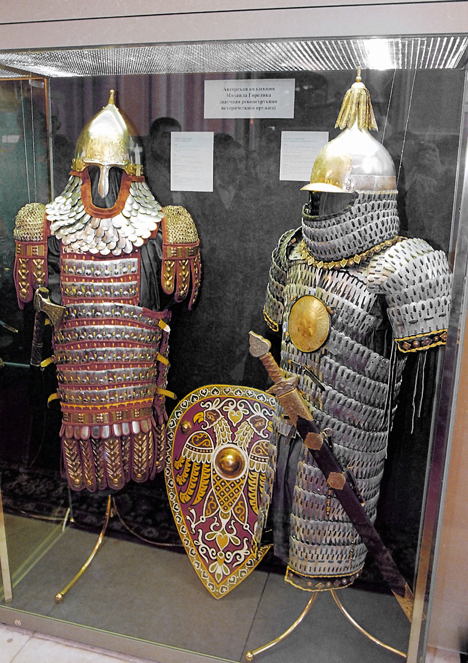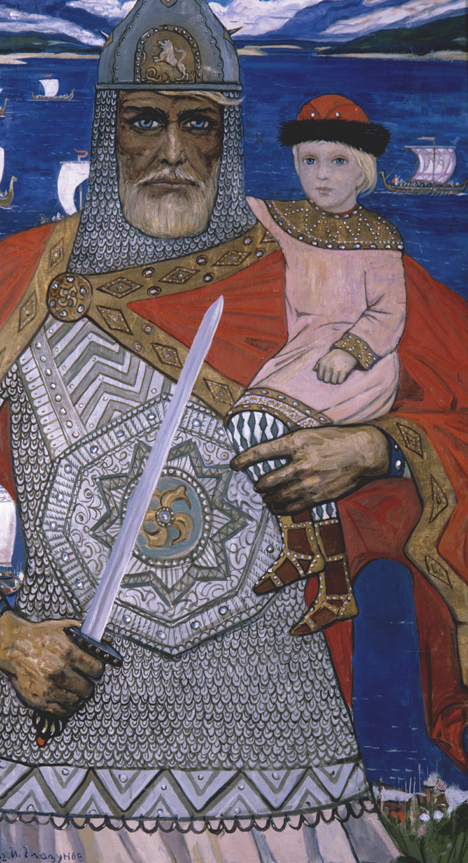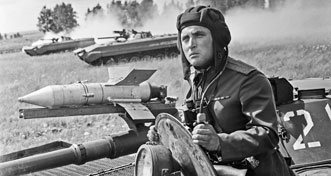From nobleman to foot soldier - Russian armor had it covered

A participant in The Warrior's Field, an annual festival of history clubs, held in Drakino Park in the Serpukhovsky district. Source: RIA Novosti/ Kallinikov
Russia is not the first country that comes to mind when one thinks of high-quality armor – thoughts instinctively turn to the great smiths of Western Europe’s medieval kingdoms. Yet Russian armor has been unearthed in 1,000-year-old burial mounds across Eastern Europe, the Caucasus and the Urals, and French poetry of the 12th century even refers to “fine Russian-made chainmail.”
Making armor is a painstaking art that demands both sledgehammer strength and delicate metal-working skills. Chainmail, for example, was one of the choicest kinds of armor but required advanced conversion technology to turn metal into wire.
A coat of 20,000 rings
The Russian masters were already doing this in the 10th century. Pieces of red-hot iron were drawn through ever finer holes in an iron sheet that progressively compressed the metal. The resultant strand was cut into pieces and then drawn into rings. One suit of chainmail needed 20,000 or more rings - which then had to be linked together individually.
Making chainmail took months and the protective coats cost as much as a thoroughbred horse. But demand was high, since linked armor protected against chopping sword blows and was also relatively comfortable to wear, compared to other types of armor.

Ancient chainmail. Source: RIA Novosti/Dmitry Korobeynikov
Weighing around seven kilograms, a coat of Russian chainmail was lighter than Western equivalents, with shorter sleeves but longer at the hem so as to cover the thigh. The returns of such costly protection are evident in surviving samples that are generally pitted by blade and arrow strikes.
Learning the lessons of the nomads
By the close of the Middle Ages, most kinds of armor had disappeared in Europe except for uniform head-to-toe suits for knights on horseback. Russian production went the other way, however, including the adoption of designs worn by the Mongol invaders who had arrived in the 13th century.
The nomad warriors did not forge sophisticated armor but rather fixed simple metal plates to leather coats. Russian armorers also integrated defensive metal plating and scales into their work, which through its greater simplicity became affordable for the lower ranks as well as commanders and the nobility.
Traditional Russian chainmail also survived and even evolved through the 14th century into a metal shirt made of flat rings, like an armoured shell, and later into baydana armor, which consisted of large flat rings.

Reproduction of "Princes Oleg and Igor" painting (1972) from "Kulikovo Field" series by Ilya Glazunov. Oil on canvas. The State Tretyakov Gallery. Source: RIA Novosti/Sverdlov
By the 16th century, metal protection was on its way out in Europe due to the proliferation of firearms. But robust armor continued to serve with distinction in Russia, aiding Ivan the Terrible’s 16th century defeat of the Tatar khanate, and the armies of the Polish and Swedish kings in the Livonian War.
The evolution of Russian armor is catalogued in icon art and its depictions of Christian warriors and archangels, as well as by records of magnificent individual sets.
Suits you Tsar
Custom-made armor forged in 1620 for Tsar Mikhail Romanov consisted of 9,000 rings and 1,500 gold decorated steel plates that were only 1 mm thick. Another 100 ornate plates were used in a set of armor for his son Alexei.
The metalworking art survived as late as the 18th century, mainly in Moscow, where the names of some streets still reflect their armor-making past. Peter the Great finally abandoned armor during his modernization of the Russian army, but the artisans’ tradition was still not lost entirely.
Chainmail production even resumed in the early 19th century for the ceremonial outfits of the Life Guards of the Tsar’s Caucasus-Gorsky imperial escort. Steel helmets, iron armor and steel bracelets with a silver finish were made for the 50 horsemen that escorted the emperor’s coach on special occasions.
Alexander Vershinin is an historian and holds a Ph.D in History. He is a senior researcher at the Governance and Problem Analysis Center in Moscow.
All rights reserved by Rossiyskaya Gazeta.
Subscribe
to our newsletter!
Get the week's best stories straight to your inbox
